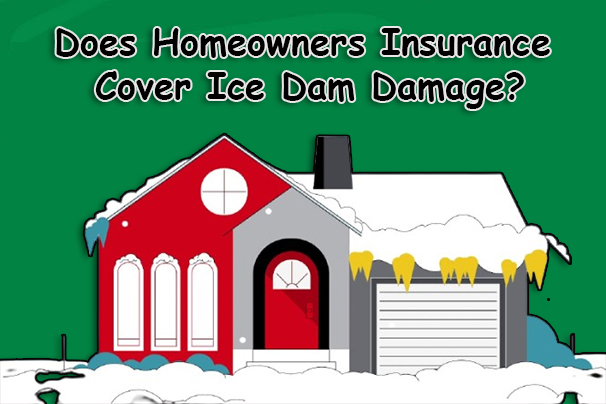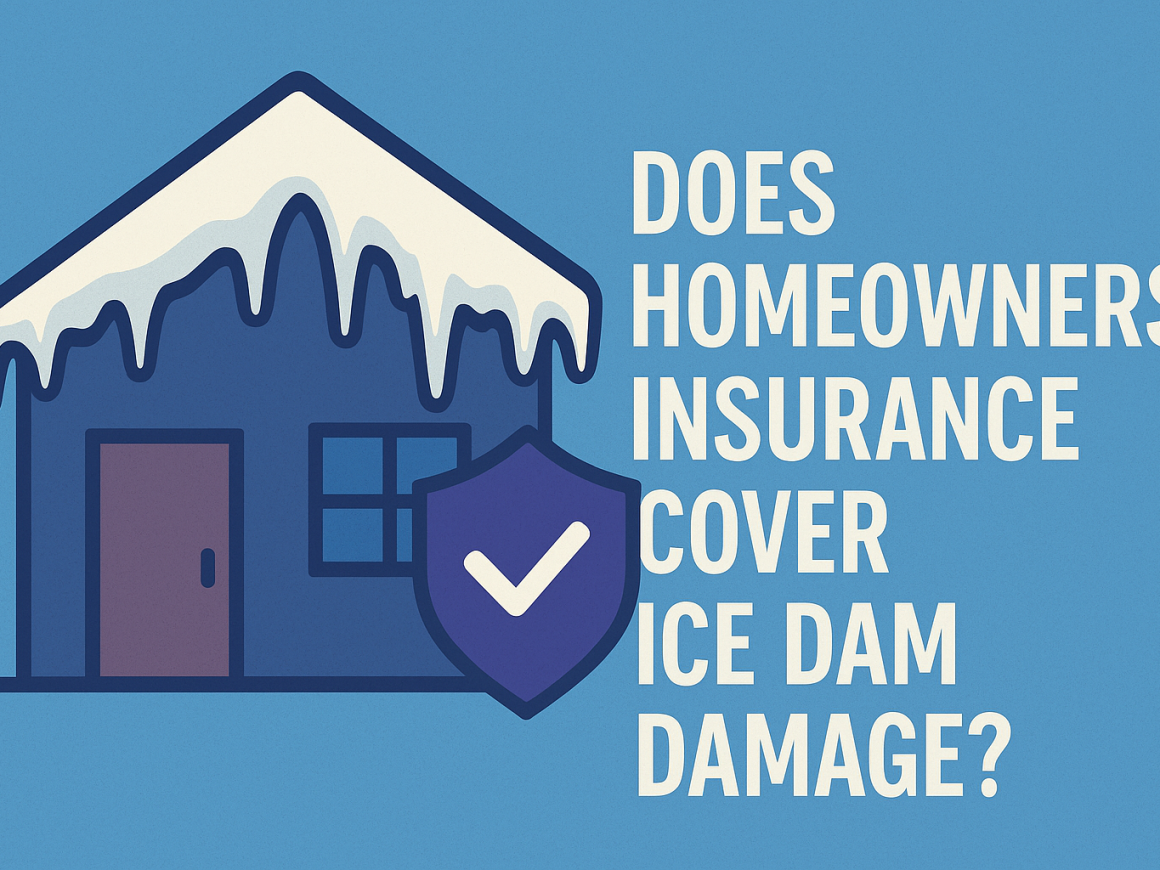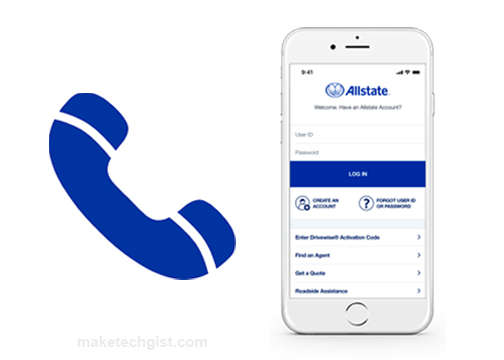Given how expensive these repairs may be, it is important to know if homeowners insurance could cover damage from an ice dam. Particularly in colder regions, ice dams may become a major worry for homeowners when winter arrives. Frozen snow accumulations around roof edges may not pose a significant threat, but if they back up and penetrate a home’s structure, they could cause significant water damage.

Homeowners may better plan for potential winter dangers by knowing how ordinary policies handle this issue, what exclusions can apply, and how preventative steps might impact coverage. This article clarifies what is normally covered and offers advice on how to protect against winter-related hazards by examining the specifics of homeowners insurance plans with relation to ice dam damage.
What Is an Ice Dam?
When the snow on your roof begins to melt and flows into the gutters and eaves, an ice dam is created. An ice ridge that forms on your roof and gutter due to water refreezing can spread up your roof and act as a barrier when further freezes take place. As the ice dam grows, it may obstruct your gutters, making it impossible for water to flow. This might result in an even bigger ice dam and water pools that could seep into your walls and roof and cause serious damage. Moreover, water leaks, shingle damage, and even a roof collapse require expensive repairs.
Does Homeowners Insurance Cover Ice Dam Damage?
Some forms of ice dam damage may be covered by your homeowners insurance, but not all of them. It can only cover the interior damage caused by melting ice, roof damage (rarely impacting shingles), and loss of use if the damage necessitates relocation. Additionally, your homeowners insurance will probably pay for these claims if water from an ice dam leaks through the eaves and destroys walls. The claim covers damages to walls, ceilings, baseboards, flooring, paint, and water mitigation techniques.
When Does Homeowners Insurance Not Cover Ice Dam Damage?
Damage from freezing, thawing, or water or ice weight may disqualify some structures from homeowners insurance coverage. The following structures are frequently impacted by this exclusion:
- Patios, swimming pools, pavement, and fences
- Any structures that support a building or other structure on the property, such as walls, bulkheads, and foundations
- Docks, wharves, and piers
- Retaining walls
Additionally, your insurance might not pay for the repairs if your roof was already in bad shape and an ice dam gradually caused water damage. Furthermore, a leaky roof is preventable with regular maintenance, and homeowners insurance doesn’t cover damage caused by neglect.
Can Ice Dams Cause Roof Damage?
Ice dams may appear safe, but during Wisconsin’s winter months, they can pose major problems both inside and outside. For example, they could result in water backing up beneath loose shingles and leaking into the house, or they could cause structural damage from untreated water damage.
Roofs sustain the most damage due to a variety of factors. Roof damage examples include:
- Attic condensation
- Roof sheathing damage
- Roof leaks
- Water stains on walls
- Water damage to the ceiling
- Mildew and mold
- Rot in attic framing
- Drooping plasterboard
- Roof collapse
Roof damage can result in significant costs for house repairs and other charges. Furthermore, speak with a roof damage insurance attorney right now if you think you have a legitimate claim that your insurer is refusing to fairly pay.
Does Homeowners Insurance Cover the Cost of Ice Dam Damage Removal?
Preventative coverage is not offered by homeowners insurance. Insurance providers won’t cover the cost of removing an ice dam if it hasn’t caused structural damage yet. Ice dam installation costs $400-$4,000, depending on size and roof type, and can be done by waiting for the ice dam to melt, removing it yourself, or hiring a professional. Additionally, removing an ice dam costs $1,200.
How to Prevent Ice Dams
Being preventive is the best way to avoid ice dams and save you the trouble of maintenance and insurance. Proper insulation, drainage, and ventilation are all methods to prevent this issue from becoming a costly catastrophe.
As winter approaches, you should do the following actions:
- Remove any trash and leaves from your gutters.
- Inspect and seal vent pipes, exhaust fans, and light fixtures that may allow warm air to escape from your house and into the attic.
- Look for indications of inadequate ventilation.
- Prevent snow from building up on your roof’s lower portions.
Is Filing an Ice Dam Damage Claim Worth It?
The type and extent of ice dam damage determine whether to file a claim, as regular claims may increase insurance costs. Paying for the damage yourself is preferable to submitting a claim to your insurance company if it is minimal. Therefore, contact your insurer if the damage is significant and make a claim if fixing your roof would cost a lot of money. You should receive reimbursement from your insurance company up to the policy limitations. The extent of the damage to your house determines whether you should make a claim. To lessen the financial load, get in touch with your insurer if it’s not minor and refrain from filing if it is.






